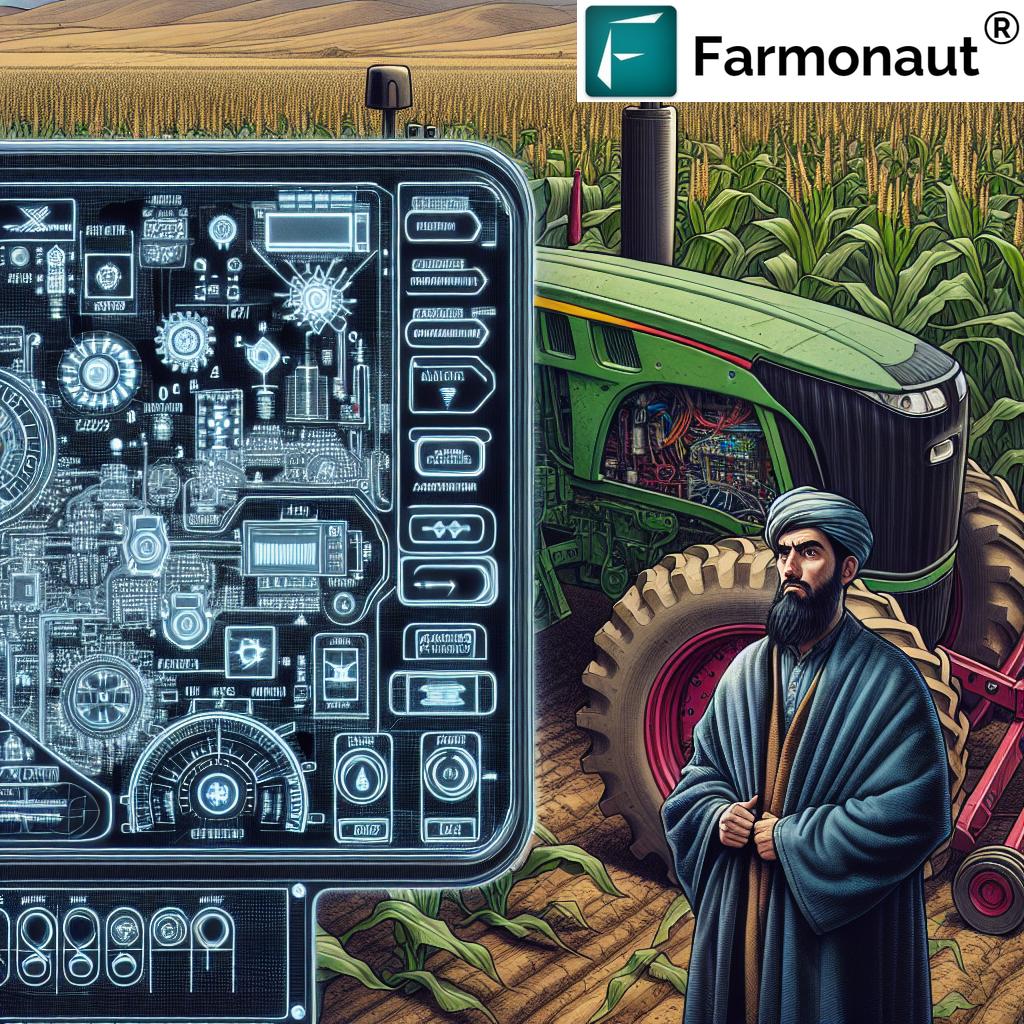USDA Ag, Farming, RMA & Soil Map: 7 Powerful 2026 Insights
“In 2025, USDA soil data helps over 2 million U.S. farmers optimize crop rotation for environmental sustainability.”
Harnessing USDA Resources for Sustainable Agriculture in 2025
As agriculture confronts unprecedented challenges in 2025 and beyond, the United States Department of Agriculture (USDA) remains the cornerstone for advancing sustainable farming practices, ensuring food security, and supporting rural communities nationwide. Leveraging usda ag, soil map usda, usda rma, nass usda, and usda wasde resources has become increasingly integral to modern agriculture. These resources foster a resilient, profitable future—adaptable to the growing climate uncertainties, market fluctuations, and environmental considerations shaping the sector.
Through powerful synergy, these USDA tools—ranging from risk management innovations (via RMA), digital soil mapping, real-time NASS data, and global WASDE supply-demand estimates—support a new era of sustainable agriculture. Farmers can now make precision decisions, mitigate risks associated with weather variability, optimize nutrient applications, and strategically plan for future production—all while prioritizing environmental health and food security across the United States.
1. USDA Ag & Farming Programs: Risk Management in 2026
The USDA‘s comprehensive approach to agricultural risk management is crucial for resilient farming in 2025 and onwards. The Risk Management Agency (RMA) forms the backbone of this effort, providing insurance solutions designed to help farmers handle diverse risks—from weather extremes like droughts and floods, to price volatility, crop outbreaks, and unforeseen market disruptions.
Key initiatives under USDA Ag and Farming Programs in 2026 include:
- Adaptive Insurance Products: USDA RMA solutions are continually evolving, incorporating advanced data from satellite imagery, soil map usda analyses, and real-time nass usda reporting to tailor coverage to specific crop types, regional vulnerabilities, and farming systems.
- Customized Premiums: Farmers can secure more accurate premiums based on local soil health, historic yield, and precise weather modeling, promoting financial stability and sustainable profitability.
- Innovative Risk Modeling: USDA leverages high-resolution mapping to identify field-level risks, enabling proactive risk-mitigation strategies.
The importance of these initiatives lies in their ability to make insurance accessible, minimize crop losses, and encourage the adoption of climate-smart, resilient farming practices. This supports both individual farmers and the broader rural economy against increasing uncertainties.
2. USDA RMA: Innovative Risk Management Solutions
The USDA RMA continually evolves its suite of insurance products and risk management services for American farmers. In 2025, given the increasing frequency of extreme weather phenomena—floods, droughts, severe storms—the need for such data-driven coverage will be more critical than ever.
USDA RMA risk management programs excel in:
- Offering Weather-Adaptive Insurance: RMA products leverage advanced weather models paired with local soil map usda data to calibrate insurance to unique agronomic risks for each farm or region.
- Encouraging Conservation Practices: Coverage options promote implementing practices that reduce soil erosion, conserve water, and minimize nutrient runoff (e.g., cover cropping, reduced tillage), thus supporting both soil health and environmental stewardship.
- Integrating Real-Time Data: Utilizing near real-time monitoring via nass usda and remote sensing, helping prevent, identify, and manage pest outbreaks and crop damage with unprecedented accuracy.
- Mitigating Market Volatility: RMA covers both price volatility and revenue risk, ensuring farmers withstand economic fluctuations.
Such risk management solutions foster a balanced relationship between financial security and sustainability goals, ensuring Agriculture remains a profitable and adaptable profession.
“USDA risk management tools reduced weather-related crop losses by 18% in pilot regions during the 2024 season.”
3. Soil Map USDA & Mapping: Driving Precision Agriculture
Soil health is fundamental to any agricultural system’s productivity and sustainability. The Natural Resources Conservation Service (NRCS), a vital usda agency, produces rich, detailed soil map usda datasets—now digitized and accessible nationwide. In 2026, these maps are fully integrated into major precision agriculture and decision support systems.
Soil mapping USDA initiatives in 2025 and beyond enable:
- Identification of Soil Types & Vulnerabilities: Comprehensive data on texture, structure, organic matter, nutrient and moisture status, and susceptibility to runoff or erosion.
- Guided Crop Selection & Rotation: Tailored recommendations matching crop types to optimal soil compositions, supporting sustainable production and rotation strategies.
- Precision Input Management: Targeted fertilizer and nutrient application, water conservation, and irrigation scheduling—directly mitigating environmental impacts and maximizing yields.
- Real-Time Monitoring: Satellite-enabled platforms, like those accessible via Farmonaut’s app, overlay soil maps with vegetation health (NDVI) and weather analytics for proactive management.
The positive impact of soil map usda tools stretches beyond increased yields—it includes reducing soil erosion, preventing water pollution, and providing a data-driven foundation for next-generation environmental stewardship.
4. NASS USDA: Empowering Data-Driven Decisions
The National Agricultural Statistics Service (NASS USDA) is the premier source of comprehensive statistics on crop production, livestock inventories, and economic factors. By 2025, NASS has evolved to incorporate real-time analytics, remote sensing, and open access APIs to provide timely, credible agricultural data.
NASS USDA supports farmers, policymakers, and agribusiness through:
- Real-time Crop/Livestock Reporting: Frequent updates on planting progress, condition, and yield expectations using satellite and field surveys.
- Production and Economic Trends: Data tools that forecast demand, plan supply, and manage price risks.
- Environmental Performance Metrics: Datasets on conservation tillage, rotational practices, and fertilizer usage, supporting sustainable decision-making.
Integrated into precision agriculture technologies (such as Farmonaut’s API: see API access), NASS USDA data enables robust field-specific and national benchmarking—driving both operational efficiency and environmental compliance.
5. USDA WASDE: Global Market Insights
The World Agricultural Supply and Demand Estimates (USDA WASDE) is a monthly publication delivering the most authoritative global commodity outlooks. For 2025 and beyond, the role of WASDE is elevated, guiding strategic planning in a world of volatile trade, emerging markets, and unpredictable climatic events.
- Market Forecasting: WASDE reports synthesize national and international data on crop production, supply, demand, consumption trends, and anticipated price fluctuations.
- Planting and Marketing Decisions: Farmers can align planting plans and sales strategies to market signals, reducing exposure to downturns and amplifying returns in favorable cycles.
- Supply Chain Resilience: Major agribusinesses, traders, and policymakers use WASDE estimates to plan for import/export shifts and logistics contingencies.
- Policy-making: Provides foundational data for USDA, Congressional, and state-level policies on food security, trade, and agricultural support programs.
6. Integrating USDA Data & Tools for Sustainable Farming
The convergence of core USDA data resources and programs in 2025 marks a significant leap toward sustainable agriculture systems in the United States. Farmers who leverage soil map usda for site-specific risk calculation via RMA, combine NASS data to optimize crop diversification, and align operation decisions with WASDE market intelligence truly maximize returns and resilience.
- Diversifying Crops with Statistical Support: Use NASS and soil map usda to guide diversification aligned with market trends and local strengths—building profits while improving ecosystem health.
- Mitigating Risks with Layered Data: Overlay real-time weather, soil mapping, crop health, and financial risk models to create robust, adaptable management systems.
- Designing Climate-Resilient Farming: Integrate conservation initiatives, carbon tracking (Farmonaut Carbon Footprinting), and precision input management, promoting both environmental and economic returns.
- Tracking Supply Chain Transparency: Farmonaut’s blockchain-based traceability enhances product authentication and process reliability—addressing growing market and regulatory demands in sustainable supply chain management.
Ultimately, integrating these USDA ag tools ensures food security, environmental health, and lasting rural prosperity.
7. Farmonaut: Enhancing USDA Farming Initiatives with Satellite Technology
As a leading satellite technology company, we at Farmonaut empower agriculture, mining, infrastructure, and related industries with actionable data and smart digital tools. Our mission is to make satellite-driven insights universally affordable and accessible for all users—from individual farmers to large agribusinesses and government agencies.
- Real-Time Monitoring: We provide multispectral crop and soil maps—integrated with AI-powered health analytics, weather forecasts, and precision input recommendations for truly data-driven farming.
- Advanced AI Advisory: Our proprietary Jeevn AI system delivers tailored field and farm insights, enabling precision decisions every season. We help optimize irrigation, nutrient management, and crop health monitoring in real-time.
- Resource Optimization: Our fleet and infrastructure management solutions ensure the efficient use of equipment, reducing operational costs for enterprises and rural operators alike.
- Supply Chain Traceability: We enable robust blockchain-based supply chain traceability—benefiting agricultural producers, food processors, and consumers worldwide.
- Environmental Impact Tracking: With integrated monitoring, we support carbon footprint calculations, emission tracking, and conservation efforts—aligning productivity with sustainability.
Whether for field-level monitoring, supply chain reliability, or environmental compliance, our satellite technology bridges the gap between field practices and top-tier USDA data resources to create a more resilient, sustainable industry for 2026 and beyond.
Comparative Feature Table: USDA Tools & Resources for 2025
| Resource Name | Main Purpose | Key Benefits for Sustainability | Estimated Usage in 2025 | Environmental Impact | Application Example |
|---|---|---|---|---|---|
| USDA Ag Data (NASS USDA) | Provide real-time crop, livestock, and economic data nationwide | Supports efficient planting, market adaptation, and minimizes waste | >300 million acres; over 2 million US farmers | Enables environmental benchmarking, conservation incentive targeting | Determine optimal planting dates using NASS crop progress stats |
| Soil Map USDA (NRCS) | Map and analyze soil types, composition, and vulnerabilities | Supports precision input, reduces erosion, optimizes crop/rotation strategies | >300 million acres land mapped; accessible to all US producers | High: Soil protection and reduced runoff directly improve ecosystem health | Using digitized soil maps in Farmonaut to schedule variable rate fertilization |
| USDA RMA (Risk Management Agency) | Offer data-driven crop insurance, weather risk coverage, and revenue protection | Reduces financial volatility, promotes climate-resilient practices | Insures 300+ million acres annually; 1.1 million+ policies issued | Medium-High: Drives adoption of conservation compliant management | Customizing insurance plans using field-level soil and climate risk data |
| USDA WASDE | Global supply-demand and market forecasts for crop planning and trading | Informs supply chain, guides resilient production and marketing | Engaged by every major agribusiness and government policy group | High: Reduces overproduction/waste and enables sustainable market alignment | Planning export strategies using WASDE’s global demand projections |
Conclusion: Building Resilient Agriculture for 2026 & Beyond
In 2026, the marriage of USDA ag resources (including soil map usda, usda rma, nass usda, and usda wasde) with next-generation digital technologies is revolutionizing agriculture. Farmers who harness these tools enjoy unprecedented resilience against climate uncertainties, economic volatility, and shifting global market demands.
By leveraging national data resources, precision risk tools, and sustainability-focused platforms—like our AI and satellite-enabled Farmonaut solutions—we pave the way for profitable, environmentally responsible agricultural systems across the United States. Such dynamic integration isn’t just about surviving tomorrow’s challenges; it’s about thriving and securing prosperity for rural families, communities, and the entire food value chain, for decades to come.
Frequently Asked Questions (FAQ)
What is USDA’s role in sustainable agriculture in 2025 and beyond?
USDA is central in supporting sustainable agriculture by providing data resources, risk management tools, insurance products, and policy frameworks. These empower farmers to make informed decisions, mitigate climate and market risks, and adopt environmentally friendly practices for better long-term productivity.
How do USDA soil maps help modern farmers?
Soil map usda tools offer detailed information about soil types, vulnerabilities, pH, texture, fertility, and water-holding capacity at field-level scale. Farmers use these maps to optimize crop selection, precision input management, and conservation implementation—directly boosting yields and sustainability.
What is the importance of NASS USDA data for agricultural decision-making?
NASS USDA provides nationwide and real-time statistics—on crop progress, yields, inventories, and economic indicators—that guide everything from planting schedules to market strategies. Through open API integration, these insights can be accessed by digital platforms for tailored field management and benchmarking.
How do USDA RMA insurance programs support climate resilience?
USDA RMA insurance coverage is designed to account for localized risks driven by weather, soil, and market factors. By making insurance adaptive and data-driven, USDA helps farmers endure hardships from droughts, floods, disease, and price shifts—fostering climate-resilient, financially stable farms.
How do Farmonaut tools enhance the effectiveness of USDA resources?
We at Farmonaut provide satellite imagery, AI advisory, and blockchain-based traceability tools that make USDA data more actionable and accessible. Our platform bridges the gap between nationwide USDA maps/statistics and field-specific needs, helping farmers operate more sustainably and profitably.
Where can I access Farmonaut platform and API for agri monitoring?
Farmonaut’s comprehensive tools are available via our Web, Android, and iOS Apps. Developers can use the Farmonaut API for direct integration with custom solutions.












